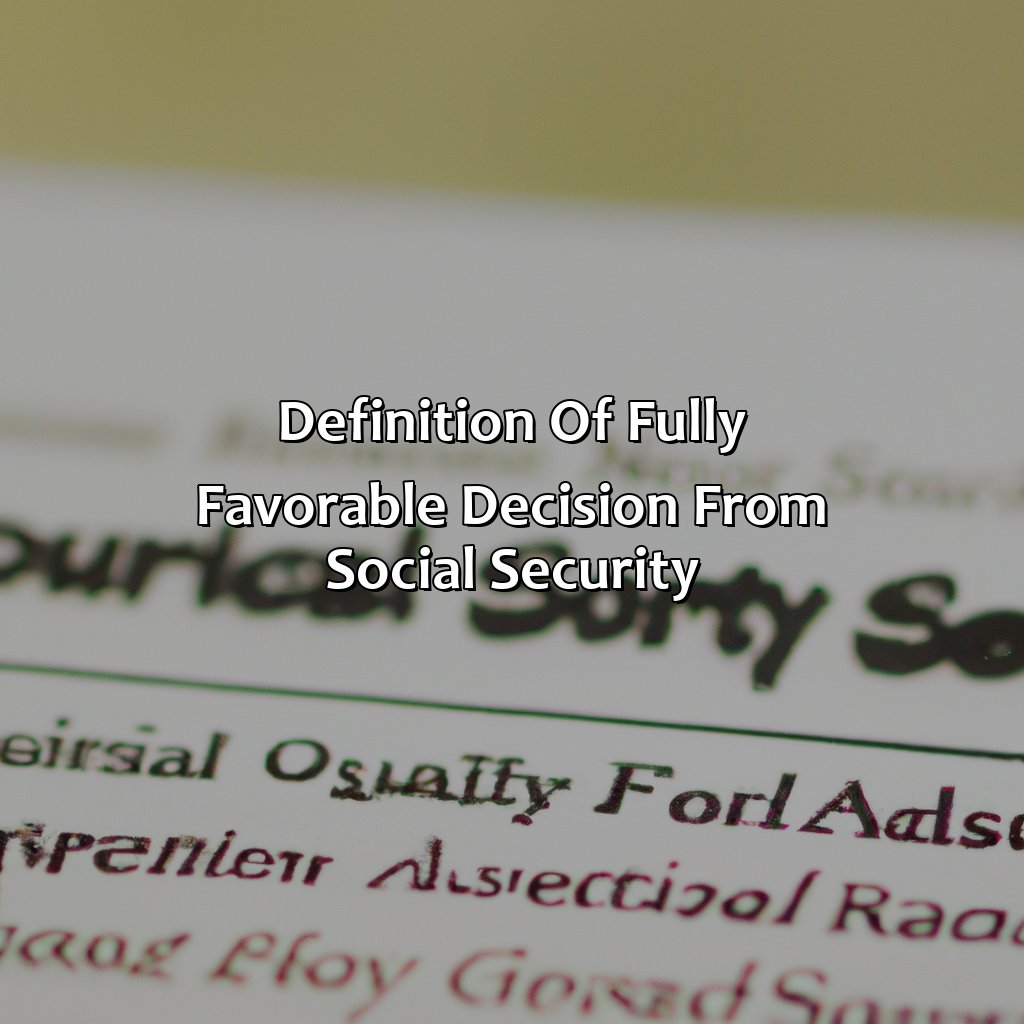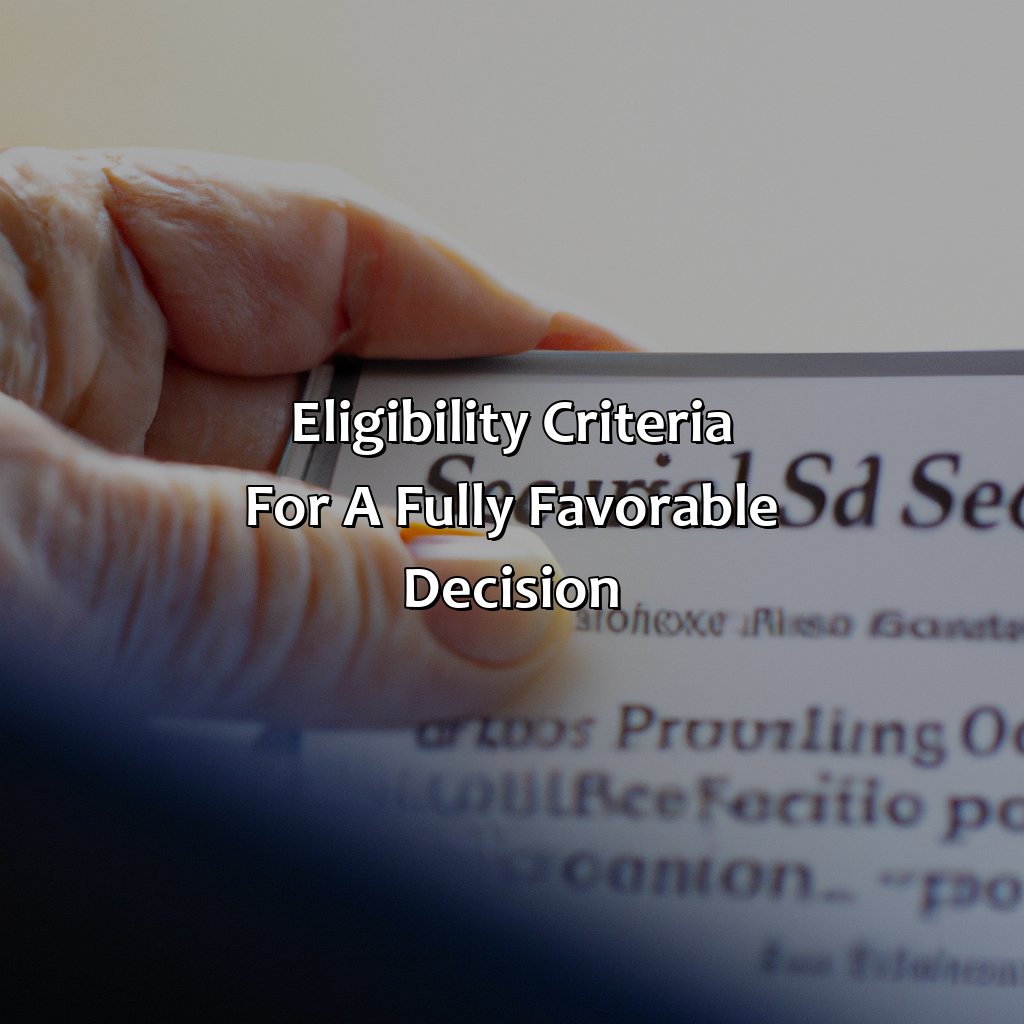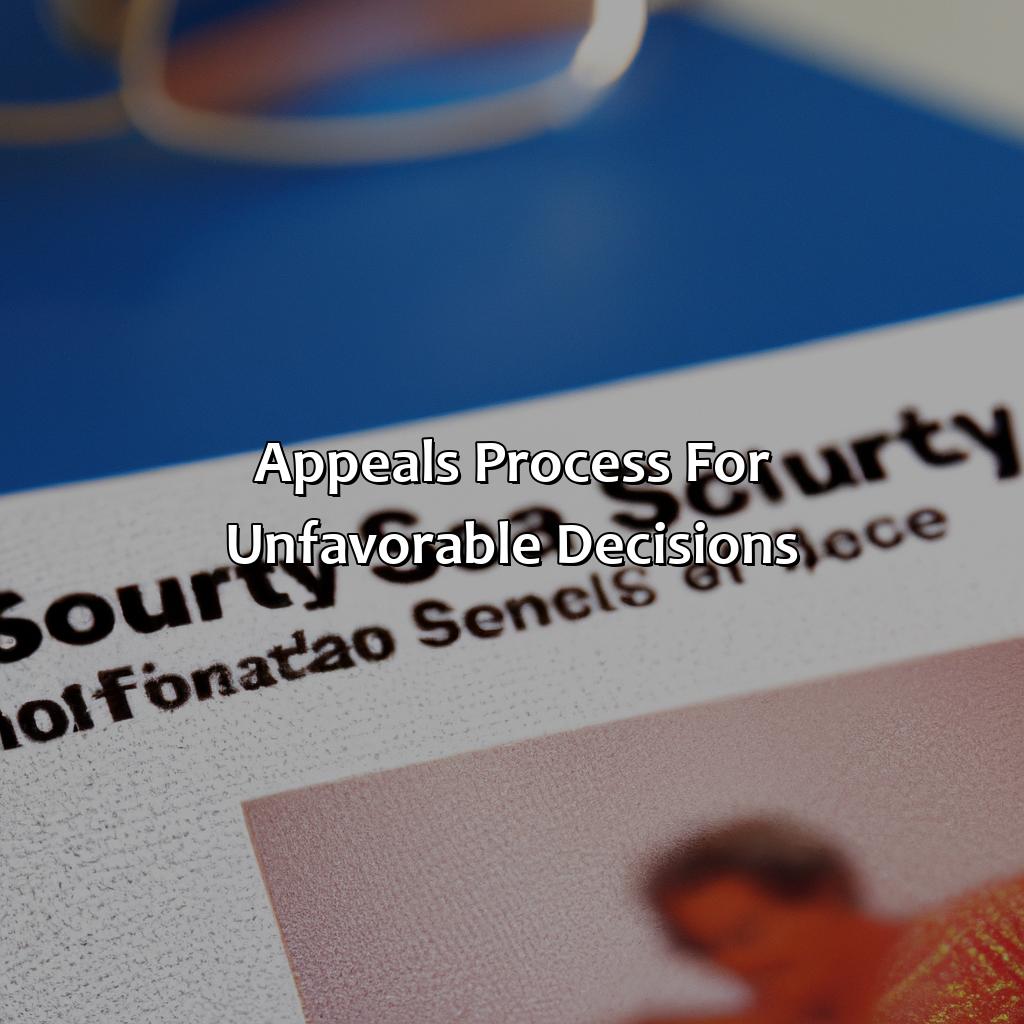What Does A Fully Favorable Decision From Social Security Mean?
Key Takeaway:
- A fully favorable decision from Social Security means that your application for disability benefits has been approved and you will receive monthly payments to support your living expenses.
- Eligibility for a fully favorable decision requires meeting the medical and non-medical requirements set forth by Social Security, including a severe medical condition that prevents you from performing substantial gainful activity, as well as a sufficient work history and income requirements.
- The process of receiving a fully favorable decision involves submitting an application, providing medical and non-medical documentation to support your claim, undergoing medical evaluations, and attending hearings if necessary. It can be a lengthy and complex process, but securing a fully favorable decision can be life-changing for those in need of disability benefits.
- The benefits of receiving a fully favorable decision include ongoing financial support as well as access to important medical benefits such as Medicare and Medicaid. It also provides peace of mind knowing that you have a stable source of income to support yourself and your family.
- If you receive an unfavorable decision, you have the option to appeal the decision through a multi-level appeals process, which includes requesting a reconsideration, scheduling a hearing with an administrative law judge, and appealing to the Appeals Council or federal court if necessary.
Are you looking for clarity on a fully favorable decision from Social Security? This article outlines what a fully favorable decision means and how it affects your benefits. You can feel confident about understanding the decision process.
Definition of “Fully Favorable Decision” from Social Security
A fully favorable decision by Social Security is when the public administration determines that a claimant is eligible for all the benefits they have requested. This decision is usually made after a thorough investigation of the claimant’s application, medical records, and other pertinent documents. When the decision is in a claimant’s favor, it means they are entitled to the full range of benefits for which they’ve applied. A fully favorable decision is a positive outcome for claimants seeking financial assistance from the federal government.
Pro Tip: Understanding the Social Security application process is complicated. It is essential to seek the advice of an attorney if you are having trouble with an application.

Image credits: retiregenz.com by James Duncun
Eligibility Criteria for a Fully Favorable Decision
Fully Favorable Decision: Qualifying Standards Demystified
A fully favorable decision from Social Security is awarded to those who meet certain qualifications. Those who are unable to work due to a disability or illness and have paid into the system may be eligible for disability benefits.
To be eligible for a fully favorable decision, an applicant must have a condition that is severe enough to prevent them from working for at least 12 months. Additionally, the condition must be expected to last more than a year or result in death.
It’s important to note that not all disability cases are the same and eligibility criteria may vary. Social Security considers factors such as age, education, and work history in determining eligibility.
Interestingly, the Social Security Administration has reported that approximately 70% of all initial disability claims are denied. However, with the help of a qualified attorney, an applicant’s chances of receiving a fully favorable decision increase significantly.
In summary, meeting the eligibility criteria for a fully favorable decision requires evidence of a disabling condition that prevents a person from working and is expected to last more than a year or result in death. With the assistance of an experienced attorney, applicants have a higher chance of receiving the disability benefits they deserve.

Image credits: retiregenz.com by James Woodhock
The Process of Receiving a Fully Favorable Decision
In the process of acquiring a favorable decision from the Social Security Administration (SSA), a fully favorable decision implies that the applicant has met the eligibility requirements for benefits. Here’s how to navigate through the process of attaining a Fully Favorable Decision from the SSA:
- Apply for Social Security Disability benefits
- Wait for a decision from the SSA
- Receive a notice of the decision, either partially favorable, unfavorable, or fully favorable
- If the decision is not fully favorable, appeal the decision
- Obtain a fully favorable decision, either through an Administrative Law Judge hearing or by filing a federal lawsuit
It’s important to note that the process can take a significant amount of time and requires thorough documentation to prove eligibility. Seeking legal assistance from a Social Security Disability attorney could improve an applicant’s chances of obtaining a fully favorable decision.
It’s important to bear in mind that acquiring a fully favorable decision is only the first step in the benefits process. Applicants must subsequently apply for and receive the benefits they’re qualified to receive based on the decision.
According to the SSA, the backlog of unresolved disability claims at the end of fiscal 2020 was 1.125 million. This significant backlog implies that the process of acquiring a fully favorable decision and benefits could take a considerable amount of time.

Image credits: retiregenz.com by James Jones
Benefits of Receiving a Fully Favorable Decision
A fully favorable decision from Social Security is a ruling that approves a claim for disability benefits. It means that the applicant has met the eligibility criteria and will receive financial assistance. The decision is based on a thorough evaluation of medical evidence, vocational factors, and other eligibility requirements.
The Benefits of Receiving a Fully Favorable Decision are:
- Financial Assistance – Approved claimants receive monthly disability benefits that can help cover living expenses and medical bills.
- Medical Insurance – Claimants may also qualify for Medicare, a federally-funded health insurance program that can cover medical treatments and services.
- Back Pay – Claimants may also receive retroactive payments that cover the time period between the initial application and the fully favorable decision, providing additional financial support.
It is important to note that the fully favorable decision may also have implications for tax and government benefits, so it is recommended that approved claimants seek professional financial advice.
One unique aspect of a fully favorable decision is that claimants may have the opportunity to request a lump sum payment for back pay. This option can provide a significant financial boost, but it also has tax implications that should be considered.
For those awaiting a fully favorable decision, it is important to maintain accurate and detailed medical records and to provide complete and timely responses to any requests for information from Social Security. It may also be beneficial to seek professional legal or financial advice throughout the application process.
Receiving a fully favorable decision can provide much-needed financial assistance and peace of mind for those facing a disabling condition. With careful planning and professional guidance, claimants can maximize the benefits of this ruling and secure a more stable future.

Image credits: retiregenz.com by Harry Jones
Appeals Process for Unfavorable Decisions
When a social security claim is denied, the claimant has the right to appeal the decision. The appeals process for unfavorable decisions involves multiple stages, including requesting reconsideration, a hearing with an administrative law judge, and a review by the appeals council. Each stage allows the claimant to provide additional evidence and arguments in support of their claim. It is important to note that the appeals process can be lengthy and requires patience. However, a favorable decision at any stage can result in receiving the benefits that were previously denied.
In addition to the formal appeals process, there are also informal approaches that can be taken. For example, a claimant can contact their local congressional representative or seek assistance from a social security attorney. These approaches may not result in a formal decision, but they can still be helpful in resolving issues and obtaining benefits.
One individual who was initially denied social security benefits due to their age and physical condition was able to receive a fully favorable decision after going through the appeals process. By providing additional medical evidence and arguing their case at a hearing with an administrative law judge, they were ultimately successful in obtaining the benefits they deserved. The appeals process can be challenging, but it offers a pathway for those who are wrongly denied benefits to receive the support they need.

Image credits: retiregenz.com by Yuval Duncun
Some Facts About Fully Favorable Decisions from Social Security:
A fully favorable decision from Social Security means that the claimant is approved for disability benefits without the need for a hearing. (Source: Disability Secrets)
It is the best outcome for disability claimants because they start receiving benefits sooner. (Source: Disability Advisor)
The decision confirms that the claimant meets the medical and non-medical requirements for Social Security Disability Insurance (SSDI) or Supplemental Security Income (SSI). (Source: Social Security Administration)
Fully favorable decisions are typically based on medical evidence presented in the claimant’s application. (Source: AllLaw)
The process of obtaining a fully favorable decision can take several months or even years. (Source: Disability Benefits Center)
FAQs about What Does A Fully Favorable Decision From Social Security Mean?
What does a fully favorable decision from Social Security mean?
A fully favorable decision from Social Security means that your application for disability benefits has been approved and you will receive all the benefits you claimed. It means that the Social Security Administration (SSA) has reviewed your application and medical evidence and determined that you are disabled, and your disability is expected to last for at least 12 months or result in death, and that you meet all other eligibility requirements.
Does a fully favorable decision mean I will receive benefits immediately?
No, a fully favorable decision does not mean you will receive benefits immediately. There is a five-month waiting period for disability benefits to begin after the date of your disability onset. In addition, the SSA may need additional time to process your claim and set up your benefits.
What happens after I receive a fully favorable decision?
After you receive a fully favorable decision, the SSA will calculate your benefit amount and may contact you to request additional information or to begin setting up your benefits. You should also receive a letter from the SSA explaining your decision and additional information on your benefits and rights.
Can a fully favorable decision be appealed?
No, a fully favorable decision cannot be appealed. However, if you disagree with the amount of benefits you receive or any other aspect of your decision, you can file a request for reconsideration or appeal.
What is the difference between a fully favorable and partially favorable decision?
A fully favorable decision means that your application for disability benefits has been approved and you will receive all the benefits you claimed. A partially favorable decision means that you have been approved for disability benefits, but the SSA has determined that your disability onset date is later than the date you claimed. This may result in a lower benefit amount or a shorter period of time for which your benefits will be paid.
How long does it take to receive a fully favorable decision?
The time it takes to receive a fully favorable decision can vary depending on a number of factors, including the complexity of your case and the availability of medical evidence. Generally, it can take anywhere from a few months to a year or more to receive a decision from the SSA.
 Checkout this IRS Loophole
Checkout this IRS Loophole 
